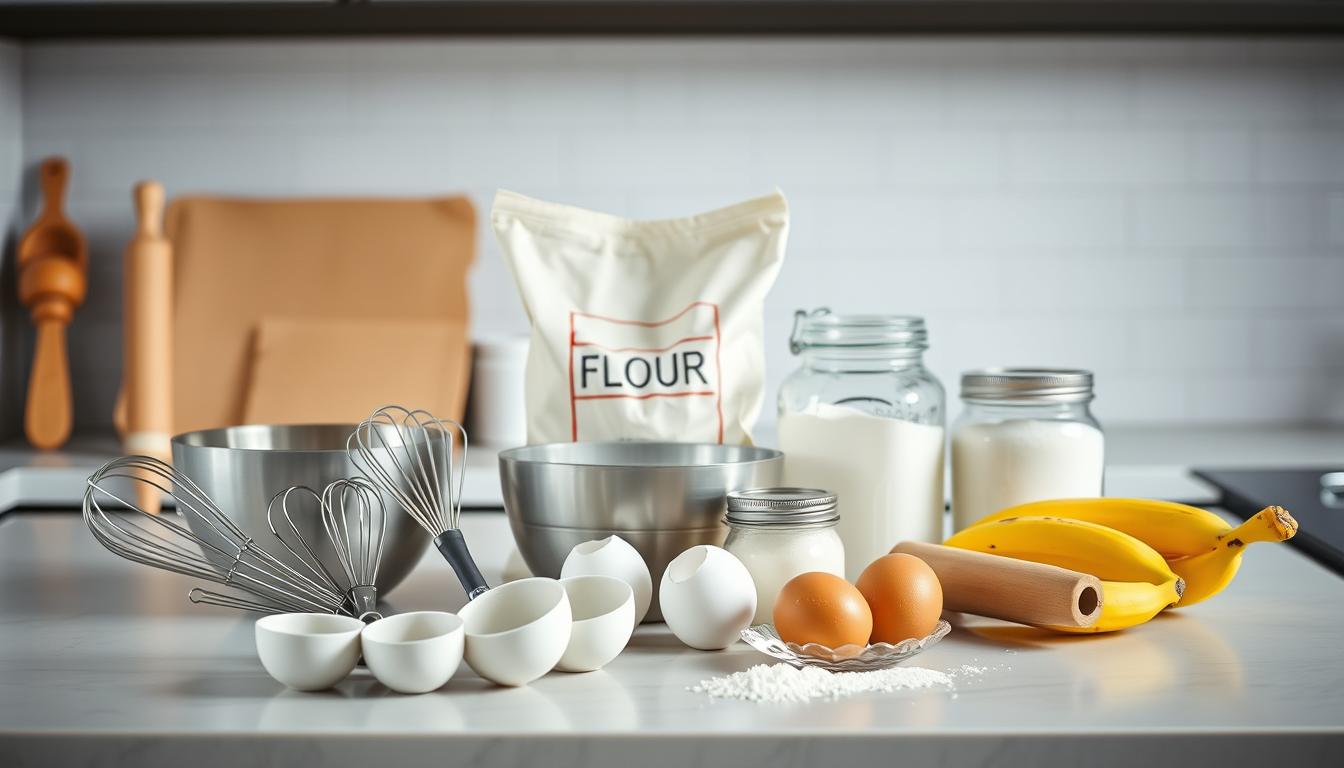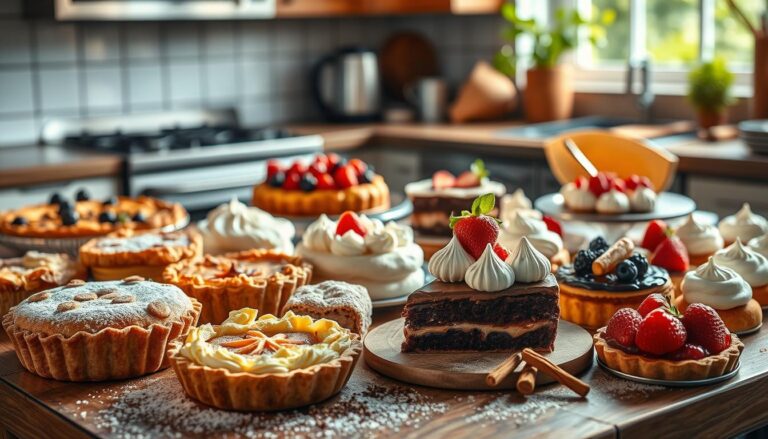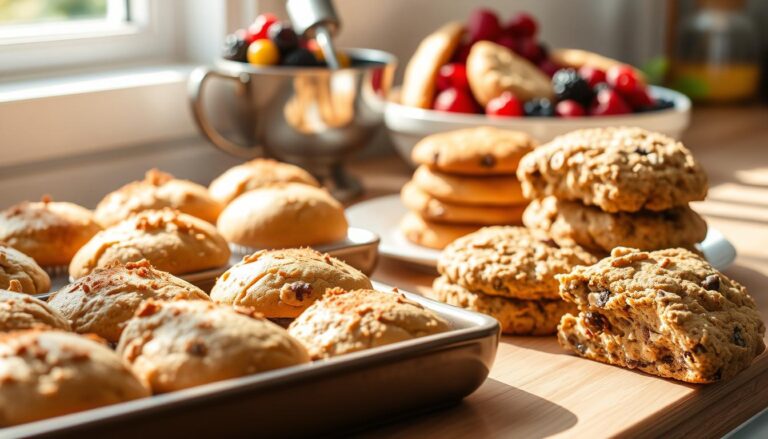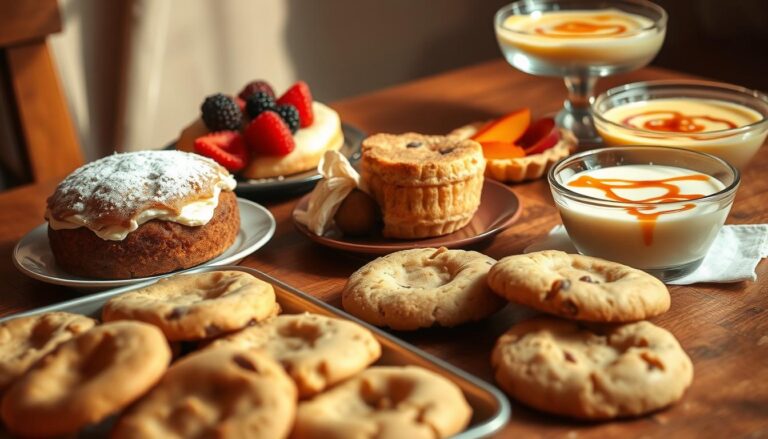Baking for Beginners: Simple and Fun Recipes to Get You Started
The first time I pulled a warm, golden-brown chocolate chip cookie from the oven, I felt like I’d unlocked a magical world. Baking for beginners isn’t about perfection—it’s about discovering joy through delicious creations. Whether you’re intimidated by mixing bowls or eager to start baking, this guide will transform your kitchen into a playground of culinary possibilities.
Easy baking recipes are your gateway to confidence. Baking isn’t a mysterious art reserved for professionals—it’s an accessible skill anyone can learn with the right guidance. From simple cookies to rustic breads, you’ll discover that creating homemade treats is both rewarding and surprisingly straightforward.
Your baking journey starts here. With straightforward techniques and foolproof recipes, you’ll soon be crafting delectable goodies that will impress family and friends. No fancy culinary degree required—just enthusiasm and a willingness to learn.
Key Takeaways
- Baking is an approachable skill for everyone
- Start with simple, beginner-friendly recipes
- Embrace imperfection in your baking adventures
- Enjoy the process of learning and creating
- Confidence grows with each recipe you master
Essential Baking Equipment and Ingredients for Novice Bakers
Starting to bake is more than just wanting to. You need the right tools and ingredients to succeed. This guide will show you what you need to turn your kitchen into a bakery.
Must-Have Baking Tools
Every beginner baker needs basic kitchen tools. Here are the key items to get:
- Mixing bowls in various sizes
- Baking sheets and cake pans
- Whisk and rubber spatula
- Cooling rack
- Pastry brush
- Rolling pin
Basic Pantry Ingredients
Having the right baking ingredients is key for baking on the fly. Here’s a list of must-haves:
| Dry Ingredients | Wet Ingredients |
|---|---|
| All-purpose flour | Eggs |
| Granulated sugar | Milk |
| Baking powder | Butter |
| Baking soda | Vanilla extract |
Measuring Tools and Their Importance
Accuracy is vital in baking. Getting measurements right is critical. Here are the tools you need:
- Liquid measuring cups
- Dry measuring cups
- Kitchen scale
- Measuring spoons
With these baking essentials, you’ll be ready to start baking with confidence.
Understanding Basic Baking Techniques
Mastering baking techniques is key to making treats that wow your loved ones. Whether you’re new to baking or want to get better, learning the basics can change your kitchen game.
Let’s explore some key baking techniques to boost your cooking skills:
- Creaming Butter and Sugar: This step creates air pockets, making your baked goods light and fluffy
- Proper Mixing Methods: Each recipe needs a specific mixing approach
- Understanding Ingredient Interactions: Learn how ingredients interact with each other
Baking is both science and art. Success comes from precise measurements and knowing how different methods affect your results. Professional bakers say technique is as important as ingredients.
“Baking is about passion, precision, and practice.” – Professional Baker’s Wisdom
Important baking skills to work on include:
- Measuring ingredients accurately
- Understanding temperature control
- Knowing when to fold versus mix
- Recognizing dough and batter consistency
By focusing on these basic techniques, you’ll grow more confident in the kitchen. You’ll make delicious baked goods that everyone will want your recipe for.
Getting Started with Simple Cookie Recipes
Baking cookies is a great way to start with home baking. This guide will show you easy cookie recipes. They are fun and simple, making you feel more confident in the kitchen.
Don’t worry if you’re new to baking cookies. With some basic techniques and simple recipes, you’ll soon be making tasty treats.
Classic Chocolate Chip Cookies for Beginners
Chocolate chip cookies are perfect for beginners. They are easy to make and always a hit. Here’s why they’re great for new bakers:
- Simple ingredient list
- Easy mixing technique
- Minimal specialized equipment needed
“The best cookies come from confidence and practice!” – Baking Enthuasiast
Mastering Easy Shortbread Cookies
Shortbread cookies are another great choice for beginners. With just a few ingredients, you can make a classic treat that wows everyone.
Tips for Perfect Cookie Consistency
Getting the right cookie texture takes practice. Remember these tips:
- Chill your dough before baking
- Use room temperature ingredients
- Measure ingredients precisely
- Watch baking time carefully
Pro tip: Invest in a good quality baking sheet and use parchment paper for consistent results.
Baking for Beginners: First Steps into Bread Making
Starting with bread making can seem scary, but the right recipes make it fun. Easy homemade bread is all about mastering a few basic steps. These steps will make you feel more confident in the kitchen.
Begin with simple recipes that don’t need fancy skills. Focaccia is a great choice for beginners. It’s an Italian flatbread that’s easy to make and teaches you the basics.
- Choose recipes with minimal ingredients
- Start with no-knead bread techniques
- Understand basic yeast activation
- Practice gentle dough handling
Learning to activate yeast is key for beginners. Use warm water between 100-110°F to wake up dry yeast. Patience is key – let your dough rise in a warm, draft-free spot.
Every time you bake bread, you learn something new. Don’t worry about mistakes at first. Each loaf you make will help you get better at bread-making.
“Bread baking is a journey of continuous learning and delicious discoveries.”
Here are the basic tools you’ll need:
- Measuring cups and spoons
- Large mixing bowl
- Baking sheet or bread pan
- Kitchen towel for covering dough
With time and practice, you’ll go from a nervous beginner to a skilled bread baker. You’ll make delicious homemade loaves that will wow your family and friends.
Mastering Quick Breads and Muffins
Starting with quick bread recipes is exciting for new bakers. These treats are great for beginners because they’re easy to make and taste amazing. Whether you want banana bread or blueberry muffins, this guide will show you how to make them with ease.
Quick breads and muffins are perfect for beginners. They don’t need yeast or a lot of kneading. This makes them a great place to start your baking journey. Here are some basic techniques to help you become a quick bread and muffin expert.
Banana Bread Basics
Banana bread is a classic quick bread. It turns overripe bananas into a tasty treat. Here are some tips for making perfect banana bread:
- Use very ripe bananas for maximum sweetness
- Mash bananas thoroughly before mixing
- Avoid overmixing the batter to prevent tough bread
- Check doneness with a toothpick inserted in the center
Blueberry Muffin Techniques
Creating tender blueberry muffins needs some special skills. The key is in gentle mixing and adding the right amount of fruit:
- Coat blueberries in flour to prevent sinking
- Use a light hand when folding in berries
- Fill muffin cups only 2/3 full for perfect rise
- Let muffins cool in the pan for 5 minutes before removing
Solving Common Baking Challenges
Baking troubleshooting is key for any home baker. Here are fixes for common quick bread and muffin problems:
- Dry texture: Reduce baking time and check oven temperature
- Sunken center: Ensure accurate measurements and avoid opening the oven too early
- Tough crumb: Mix ingredients just until combined
- Uneven baking: Rotate pan halfway through baking process
With practice and patience, you’ll get better at baking quick breads and muffins. Remember, every baker starts where you are – learning and getting better with each try.
Simple Cake Recipes for Beginners
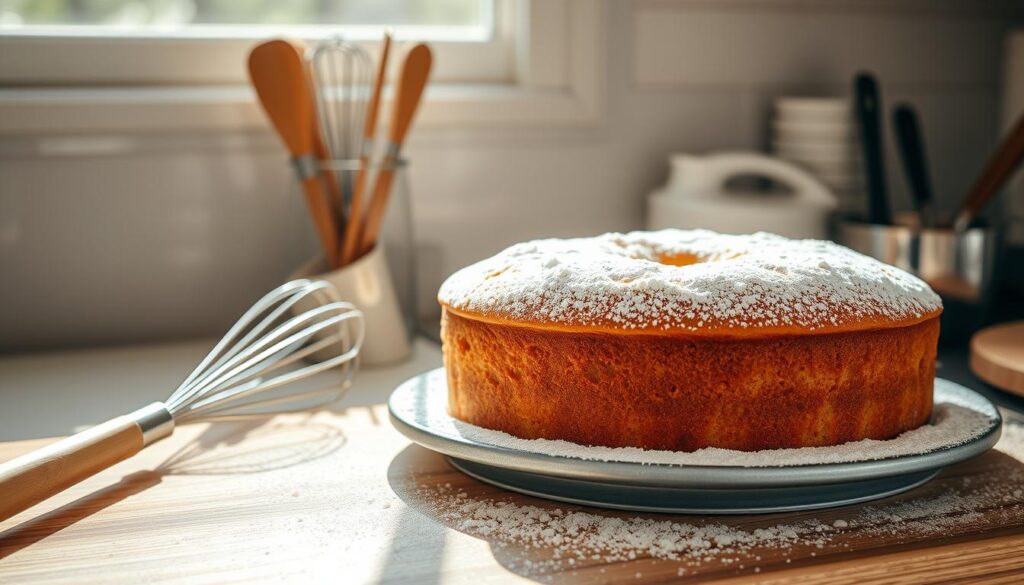
Starting with cake baking can seem scary, but it’s easy once you get the hang of it. Simple recipes are great for beginners. They help you build confidence in the kitchen.
Begin with basic recipes that need little skill. Sheet cakes and pound cakes are perfect for newbies. They teach you the basics and always taste great.
- Choose recipes with few ingredients
- Use room temperature ingredients
- Measure precisely
- Follow mixing instructions carefully
Learning key baking principles is important. Temperature is key – eggs and butter should be room temperature. This ensures the right mix and texture.
| Cake Type | Difficulty Level | Preparation Time |
|---|---|---|
| Classic Vanilla Sheet Cake | Beginner | 45 minutes |
| Simple Pound Cake | Beginner | 60 minutes |
| Chocolate Buttermilk Cake | Intermediate | 50 minutes |
Practice is key in cake baking. Start simple, learn techniques, and gradually expand your skills. With patience and practice, you’ll become a confident cake maker.
Introduction to Pie Making
Pie baking is an art that brings warmth and joy to any kitchen. It’s perfect for both new and experienced bakers. Mastering homemade pie crust can change your baking game. Easy pie recipes are a great way to start, and with a few tips, you’ll make delicious pies quickly.
Mastering the Perfect Pie Crust
Making a tasty homemade pie crust takes precision and practice. The key to a flaky, tender crust is a few important tips:
- Use cold butter or shortening
- Handle the dough minimally
- Chill the dough before rolling
- Work on a cool surface
Understanding Pie Fillings
Pie fillings are the heart of any great dessert. Apple pie is a classic choice for beginners. It’s forgiving and delicious. When making your filling, keep these tips in mind:
- Choose fresh, high-quality ingredients
- Balance sweetness and spices
- Prepare filling just before assembling
- Avoid overfilling the pie
Baking and Assembly Secrets
The final steps of pie making are critical. To get a perfect pie, focus on assembly and baking. Use an egg wash for a golden crust. Place a baking sheet under your pie to catch drips. Bake at the right temperature for a crisp crust and fully cooked filling.
Remember, practice makes perfect in pie baking!
Working with Different Types of Dough
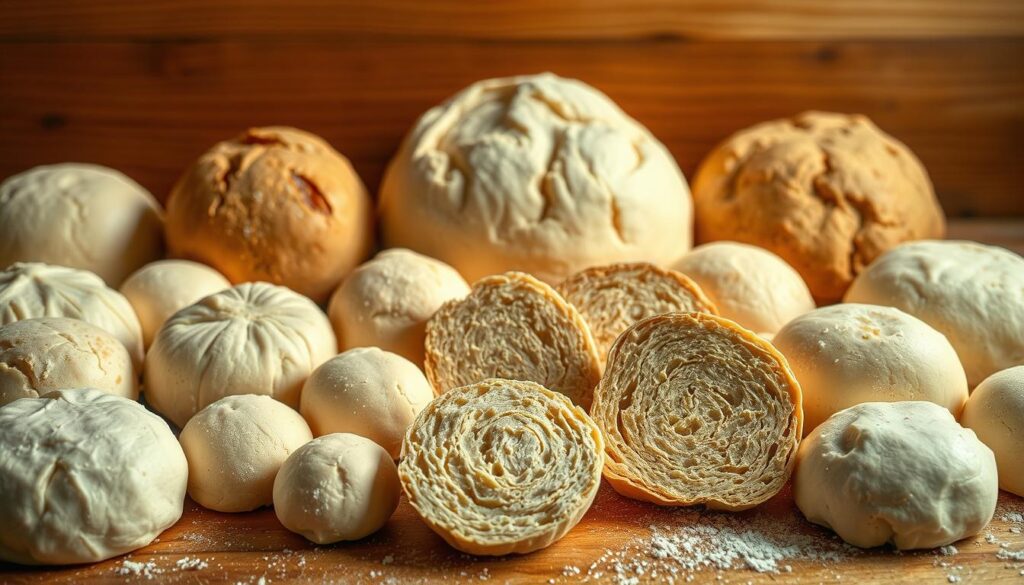
Exploring different dough types is exciting for home bakers. Learning various dough techniques can make your baking skills shine. Each dough type needs special handling and preparation, affecting the final product.
When working with different dough types, you’ll find several key varieties:
- Cookie Dough: Soft and malleable, great for shaping treats
- Bread Dough: Needs careful kneading and rising time
- Pie Crust Dough: Requires gentle handling for flakiness
- Pastry Dough: Needs precise mixing for the right texture
Successful baking with dough depends on knowing how ingredients work together. Temperature, mixing, and ingredient amounts greatly affect dough consistency. Cold butter makes pie crusts flaky, while room-temperature ingredients help cake batters mix well.
Some key dough techniques to master include:
- Proper ingredient measurement
- Correct mixing methods
- Understanding gluten development
- Recognizing ideal dough consistency
Learning to work with different dough types takes practice. Start with simple recipes and build your skills. Don’t worry about mistakes – even pros keep improving.
Time-Saving Baking Tips and Tricks
Baking doesn’t have to be long or hard. With quick tips, your kitchen can become a place of ease. Start by preparing smartly and using clever methods to save time and energy.
Learning baking hacks can cut down your kitchen time and stress. Here are some top tips to make baking smoother:
- Prep ingredients in advance using the mise en place method
- Use parchment paper for effortless cleanup
- Invest in multi-purpose baking tools
- Batch cook and freeze baked goods
Professional bakers say organization is key. Always read a recipe before starting. Gather all ingredients and tools, measure them in advance, and set up your space well. This way, you avoid last-minute rushes and mistakes.
Technology can help you bake better. Digital scales give exact measurements, and food processors mix dough fast. No-bake recipes are great when you’re short on time or don’t want to use the oven.
Smart baking is about working smarter, not harder!
Try making a baking schedule. Prep dry ingredients the night before, or mix dough and refrigerate it. These simple steps make complex baking projects fun and easy.
Conclusion
Starting your baking journey is thrilling. It opens a world of tasty possibilities. Your skills grow with simple recipes and practice.
Every great baker started where you are now. They learned and explored the art of making delicious treats.
Building baking confidence takes time and patience. Each recipe teaches you something new. This includes ingredients, techniques, and your creativity.
Don’t worry about mistakes. They are lessons that make you better. They help you become a skilled baker.
Your baking journey is unique and personal. Try new recipes and techniques. Most importantly, enjoy the process.
Whether it’s chocolate chip cookies or homemade bread, every step is a step forward. You’re getting closer to being a better home baker.
Start small, be curious, and keep practicing. With dedication and enthusiasm, you’ll become a confident baker. Your kitchen is your canvas, and your ingredients are your colors.

